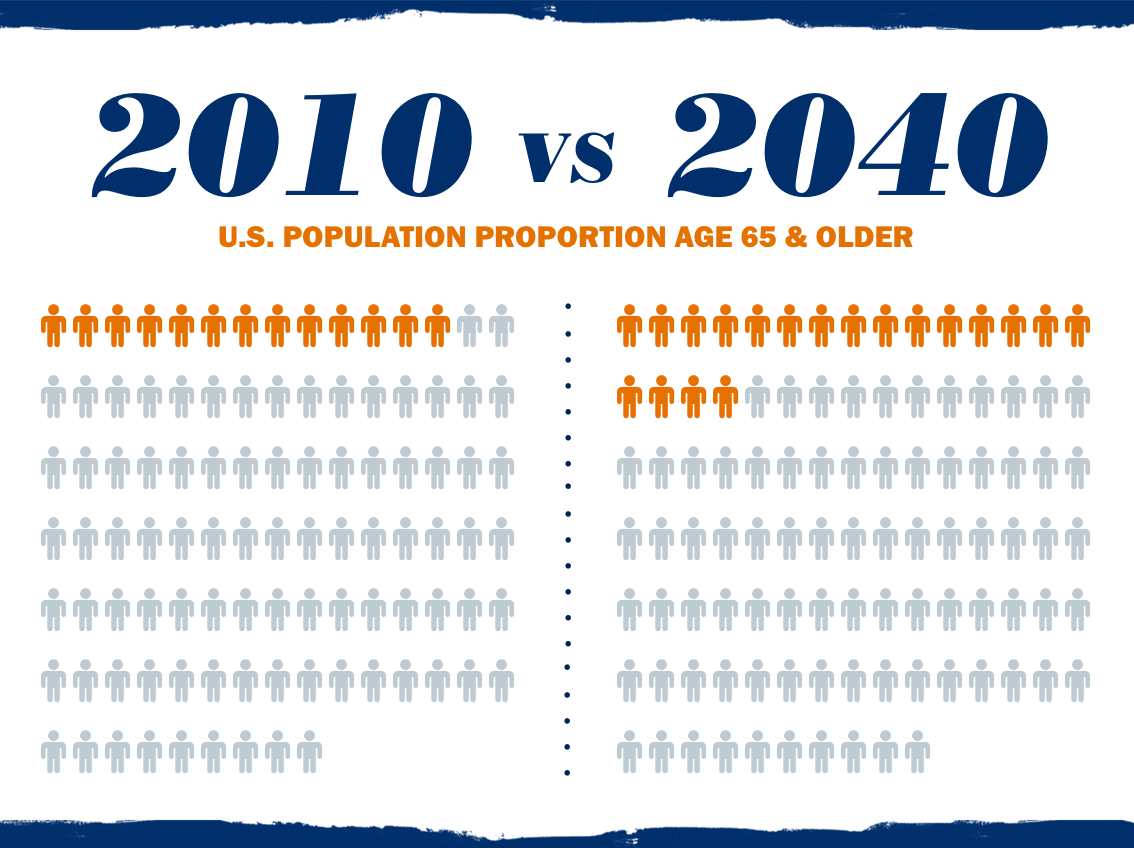The U.S. population is projected to reach 383 million by 2040, according to national population projections released by demographers at the University of Virginia. Growth in the current and next two decades is expected to be slower than last couple of decades, and will present a somewhat different pattern. In addition to births and immigration, projected growth is increasingly associated with longevity, especially among the Baby Boomer seniors.

The national and state population projections developed by researchers at UVA’s Weldon Cooper Center for Public Service suggest changes for the nation and all 50 states (and the District of Columbia) in overall population and in age distribution between 2020 and 2040.
“While many states, like Virginia, develop state-specific population projections for use in planning and capital outlay decisions, our work provides a fresh analysis of how the demographics of the nation, and each of the 50 states and the District of Columbia, may look in the future,” said Qian Cai, director of the Cooper Center’s Demographics Research Group. “Applying a consistent methodology to all states illuminates how population trends, such as aging, may vary across the states, and foretell challenges at the state level that might be missed in national-level projections.”

The U.S. Census Bureau last issued state projections in 2004, based on 2000 census data. In 2013, the Cooper Center released the first publicly available, state-level projections using the more recent 2010 Census data. These projections update the 2013 release.
Some key findings include:
- The overall rate of U.S. population growth is likely to slow, from nearly 10 percent between 2000 and 2010 to 6 percent between 2030 and 2040. Immigration, which contributed significantly to U.S. population growth between 1990 and 2010, has slowed and is expected to remain at a lower level. At the same time, low birth rates and delayed childbearing also combine to slow population growth.
- Geographically, population growth continues to head south and west. Georgia and North Carolina are expected to continue to move up in the rankings of the top 10 largest states between 2010 and 2040, while both Michigan and New Jersey are projected to drop off that list by 2040. Virginia is expected to be the 10th-largest state by 2040.
- Washington, D.C., Texas, Colorado, Utah and Florida are projected to have the fastest growth rate in the next two dozen years.
- A handful of states, mostly in the New England, Mid-Atlantic and Midwest regions, are expected to experience population decline between 2030 and 2040, including Vermont, Rhode Island, Maine, Connecticut, West Virginia, Illinois, Michigan and Ohio.
- New England will become the oldest region in the country. By 2030, a quarter or more of the residents in New Hampshire, Vermont and Maine will be 65 or older. Maine continues to have the highest median age in the country, with half of its population aged 48 or older by 2040.

“In many respects, the projections are unsurprising and reflect a continuation of well-established trends,” Cai said. “However, if we look at population increase by age groups, it is notable that the sharp increase in the population ages 65 and older, due to the size of the Baby Boomer cohort and their continuing longevity, will likely outpace the increase of the under-65 age group between 2010 and 2030. This will have implications for policy priorities, workforce planning and consumer markets.”
The 2016 national and state projections are available here.
Media Contact
Demographics Research Group, Weldon Cooper Center
meredith.gunter@virginia.edu 434-982-5585
Article Information
May 9, 2016
/content/uva-study-national-and-state-population-projections-show-slow-growth

